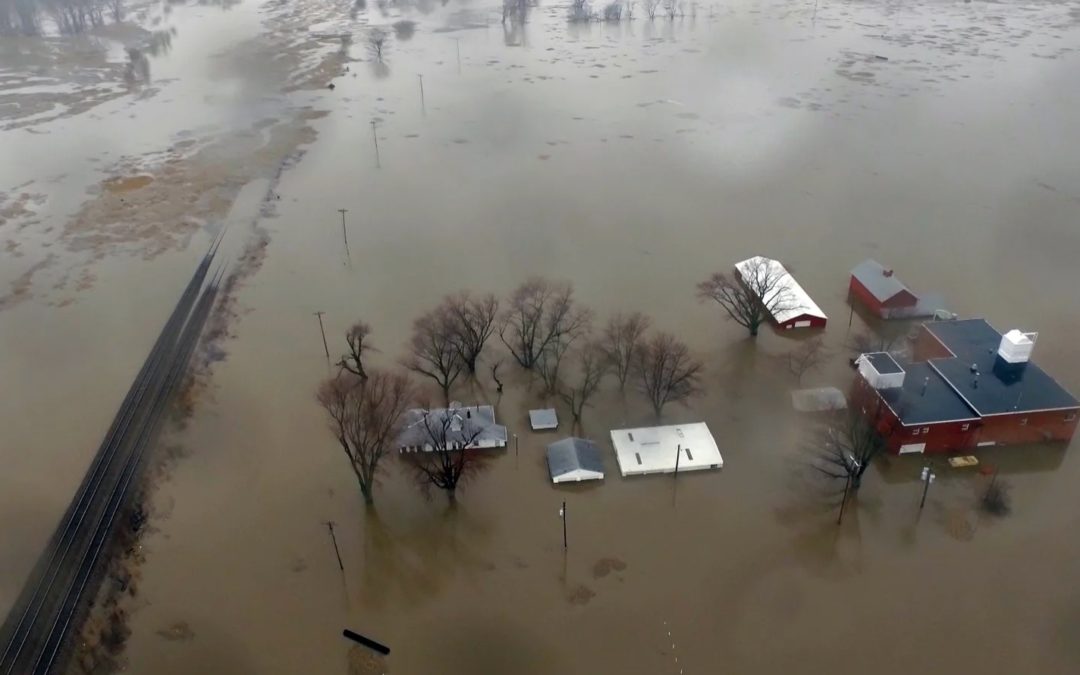SOURCE: Earther
DATE: March 21, 209
SNIP: The Midwest floods continue to be a slow-moving disaster. Towns, farms, and infrastructure are still underwater in Nebraska, and water will take months to work through the vast network of rivers, creeks, and streams that drain the Upper Midwest into the Gulf of Mexico.
The damage to the region could last much longer than that, though. It could require years to rebuild infrastructure, but the real challenge will be restoring the region’s greatest resource, the reason there are so many farms there in the first place: its soil.
Early estimates indicate the floods could be responsible for $440 million in crop losses in Nebraska, which sits at the epicenter of the floods. That number could easily rise the longer floodwaters cut farmers off from fields and prevent spring plantings. That’s bad news for a state where one in four jobs are tied to or supported by farming, according to the state’s Department of Agriculture. States next door are dealing with their own varying levels of crisis from rivers overtopping their banks.
Even after the floodwater recedes, the region’s farms and the soil they’re built on could face a long road to recovery, spanning years or decades. To understand why, you have to understand how these floods happened. After an extremely wet fall, winter arrived with a fury. Repeated blasts of cold froze the soil and heavy snow piled up on top of it. Then came the bomb cyclone a few weeks ago. It unleashed a blizzard in western Nebraska, but the eastern portion of the state saw rain and lots of it. Nearly three-quarters of Nebraska weather stations are seeing an increase in winter rain, according to Climate Central.
Soaked soils couldn’t absorb the sudden influx of water, and so it began to run off into rivers and streams, scraping the earth away with it. Add in dam and levee failures, and the torrent truly clawed away at the Midwest’s most bountiful resource.
“Basically what it’s going to do is going to erode the most productive topsoil,” Mahdi Al-Kaisi, a soil and water specialist with Iowa State’s extension program, told Earther. “This is why we need to think about climate change more seriously. That’s become very destructive to this whole system and put a lot of stress on these surfaces.”
It’s not even just the top layer of soil that’s being ripped up and washed away. Where the floodwaters have receded, huge blocks of soil have been gouged away. The weight of the water has also compacted soil in some locations, while others are covered in sand and silt that’s been swept up by engorged rivers, neither of which is as nutrient-rich or structured as the soil that supports the wheat, soybean, and corn crops.

